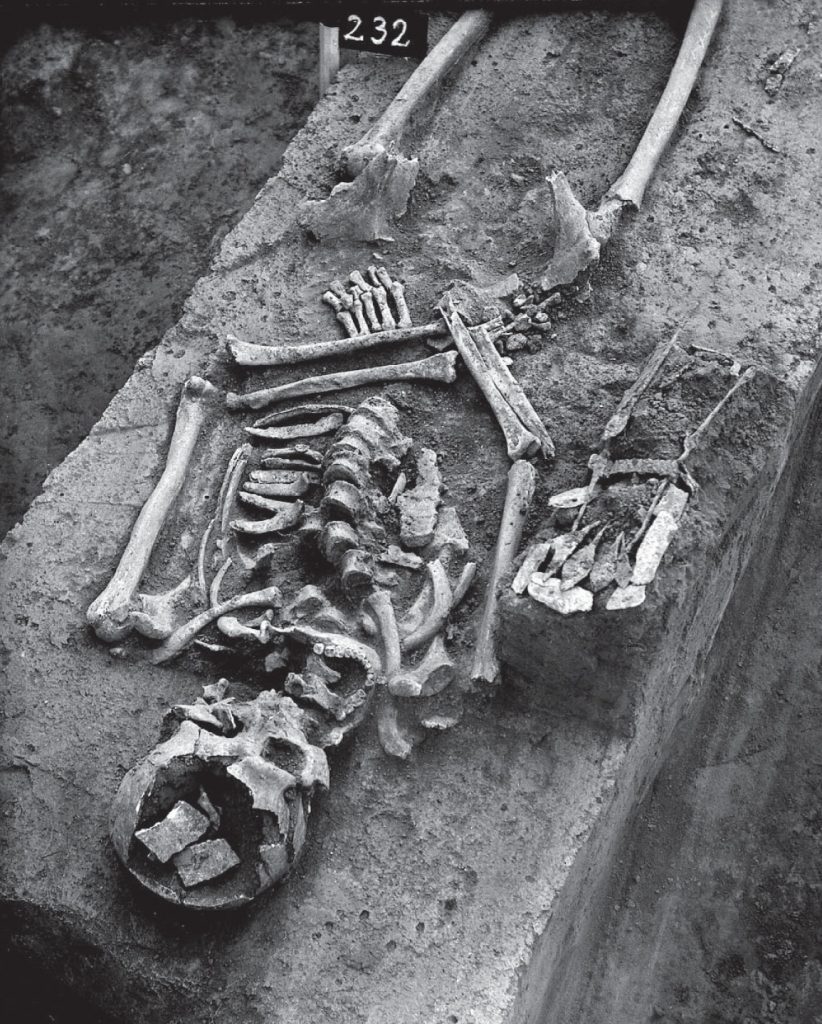PRACTISING THE ART OF ARCHERY FIGHTING
THE SKILL OF BATTLING ON HORSEBACK REQUIRED CONSTANT PRACTICE. ONLY THOSE WHO HAD ACQUIRED THEIR RIDING SKILLS AS A CHILD, AND HAD SPENT MOST OF THEIR LIVES ON HORSEBACK, COULD REMAIN IN THE SADDLE TIRELESSLY, FOLLOWING TRACKLESS PATHS FOR HOURS AND HOURS, AND ONLY THOSE WITH EXTENSIVE EXPERIENCE WERE ABLE TO KEEP THEIR HORSES UNDER CONTROL IN TAUTSITUATIONS. THEREFORE THE USE OF WEAPONS ON HORSEBACK, ESPECIALLY DRAWING THE ARROW AND TAKING AIM, DEMANDED CONTINUOUS PRACTISE.
Chinese historians recorded that the Hun used to teach their children how to ride on the backs of sheep and that these children would hunt for mice and other small animals with simple, wooden bows while riding. (Today Mongolian boys and girls begin to learn to ride between the ages of 4 and 7, though not on sheep-back, but on real horses.)
These so-called drills and exercises must have played a significant role in later times as well. We know from historical records that the tribal ruler would organise great, collective hunts every autumn, and that these chases served not only to provide winter meat-stocks but also as yearly field-exercises. This big “drive” provided opportunities to practice and harmonize team manoeuvres, military tactics and to maintain fighting skills.
Different military units would use horses of different colours: this also helped to synchronize team-manoeuvres. In 200 AD the troops of the Chinese emperor were ambushed and surrounded by three different units: black horses from the West, blue (grey) horses from the East, while from the North, riders on red (bay) horses circled them as well. This means that the colour of the horses was selected according to the colour of the four (or, in this case, three) corners or quarters. This custom continued for a long time.
Aiming and discharging the arrow was practised among the Hun with less complicated, every-day methods as well. In the record of Ambrosius, bishop of Milan, entitled “Liber de Tobia”, which was written in about 385 CE, the bishop mentions the Hun’s passion for dice-games. In his view, this was partly responsible for minor campaigns and pillages. It is widely known that amongst nomadic, sheep-keeping people like the Hun, dice were made from the ankle-bones (astragalus) of sheep. Carved and decorated dices made of sheep-bone frequently turn up in the Hun graves.
The people of the steppes used to play various different gambling and “rush” games with ankle-bone-dices. Some of these games can be interesting from a strategic point of view as well.
Players would flick small pieces of ankle-bones with their fingers into a remote target from a finely polished board. When one hit the target, he was hailed with the same ancient melody that was used to greet the winners of great archery-games. This popular game served as a sort of finger-work for archery, inasmuch as the players would perform the same movement with their thumbs, index- and middle fingers that was used when discharging/releasing the arrow. On this basis, the board was called the “bow” while the
ankle-bone was called the “arrow”. Not only was this game a perfect way of amusement, it made it possible to practise archery skills constantly, even when not mounted or carrying a bow, which was of vital importance.




